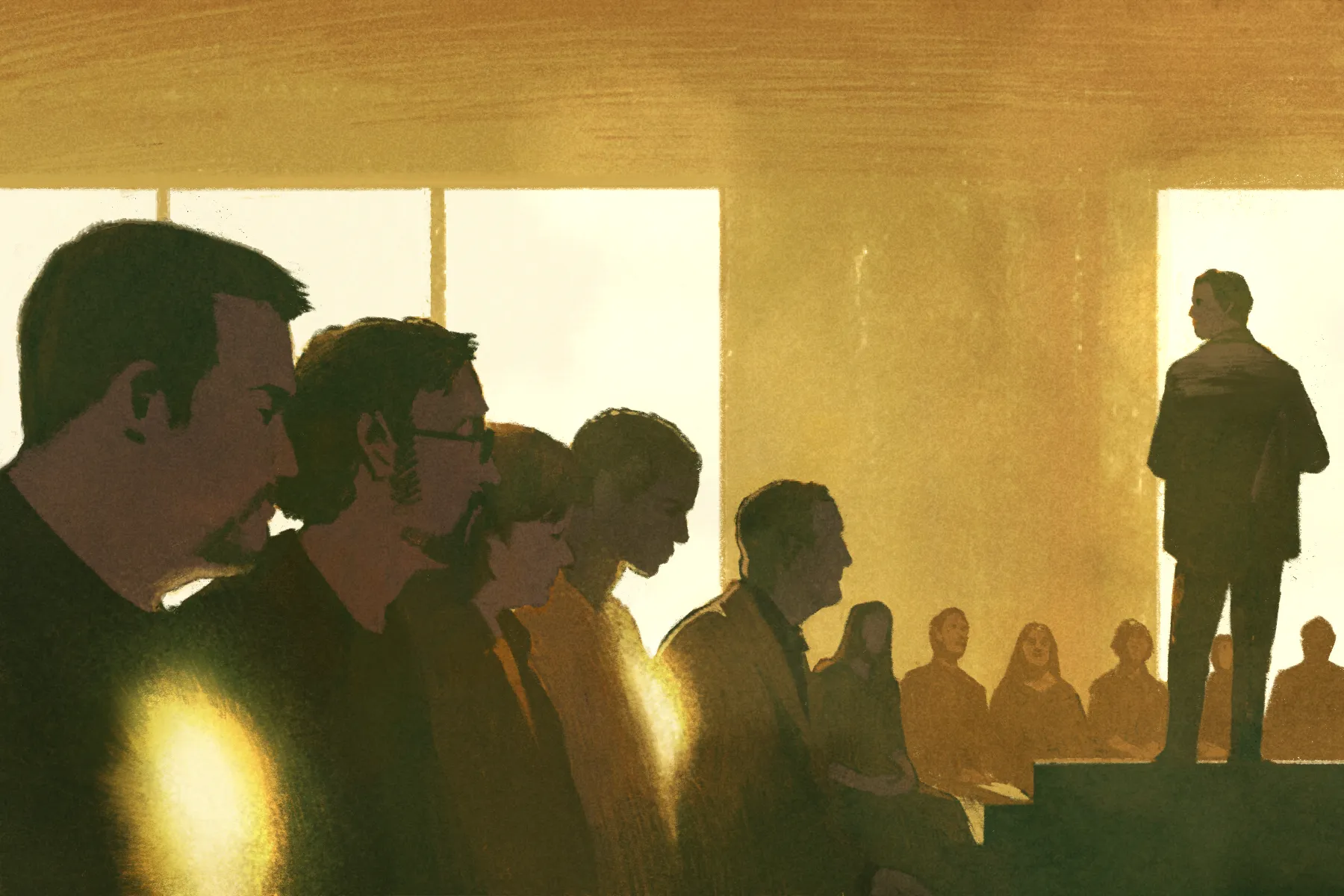It’s been jokingly said that rocking chairs are an American innovation: We need to feel as if we’re going somewhere, even when we’re relaxing. We are a nation of the “hard-wired and dog-tired.”
We’re always trying to move faster, cramming in one more thing even while saying we want to slow down. And yes, slowing down is the focus of this article, but before we talk about how to go about that, let’s do a reality check.
 Illustrations By João Fazenda
Illustrations By João Fazenda
Put your phone down, shut the laptop, set a five-minute timer (10 minutes, if you have that much), and then … just be still. No distractions, multitasking, or entertainment. No music or tv in the background to fill the silence. Be fully present with yourself.
Now, once you’ve done that, answer one or more of these questions. Take notes in a journal if you want.
How did you feel?
What did you notice about yourself?
Were you peaceful, relaxed, unsettled, restless, distracted, or perhaps even annoyed?
Finding, embracing, and maintaining stillness can be difficult, but it’s something we’re called to cultivate as part of the Christian life (Ps. 46:10 NIV). By removing distractions, we’re making room to become familiar with the God who dwells inside us. That’s why we’ve created this guide—to help you explore this often discussed (but rarely practiced) spiritual discipline. It is our hope, not that you perfect being still but that one of these exercises helps you pause just long enough to connect with God—and to be refreshed by Him.
Too Busy to Stop
Perhaps the best metaphor to describe our hurried and anxious lives is that of a carwash. You know the drill: When you pull up to a car wash, you’re instructed to leave the engine running, let go of the steering wheel, and take your foot off the brake. Then you wait for the apparatus to suck you through.
That’s what a typical day does to most of us—it sucks us through. For many, life is non-stop. We’re so busy it can sometimes feel as if we’re losing our mind. Often without our knowing it, hurry and blaring interruptions exact their payment—and suddenly we realize our worn-out body houses an empty soul.
The reality is, the most significant threats to people of faith are not the arguments of skeptics or the lure of harmful things. The bigger threats are our own busyness and frantic pace—persistent overstimulation that swallows us whole and slowly squeezes out of us the good that God has put there.
So, what can we do to deal with these threats? We can try to be still.
What Is Stillness?
Stillness is a strategic withdrawal from needless activity. It’s not problem-solving, planning, or even praying. But why is that so essential for us as believers? Because being still calms the mind, body, and emotions in order for the soul to rest. It’s a way of acknowledging our human limits and that we are not God.
We tend to associate doing God’s will with activity, so the more active we are, the more (we imagine) He likes it. But our heavenly Father is interested in both sides of the equation—our activity and stillness—and the extreme imbalance we live under today violates the essential rhythm we were made to enjoy. Both activity and stillness are God’s creations, and there’s a suitable time for each.
There’s a legend that says while on a safari, members of certain African tribes stop periodically as they travel to allow their souls to catch up with them. That’s what the practice of stillness does for us—it adds calm to our routine of work to balance our spirit.
Despite what Western culture tells us, stillness is not a waste of time. When you’re still, you’re not doing nothing; you’re doing something essential. It is both a time of rest and a time of awakening.

Jesus Himself routinely practiced pausing. The first chapter of Mark’s gospel describes Jesus' first day on the job as Messiah. It was a marathon day: up early, teaching in the synagogue, healing Peter's mother-in-law over lunch, then up late, healing the sick. It was a non-stop, busy, and exhausting first day!
But look at Day 2.
Mark 1:35 tells us, “And in the early morning, while it was still dark, Jesus got up, left the house, and went away to a secluded place, and prayed there for a time.”
Jesus’ life reflects a steady rhythm of intentional engagement and strategic withdrawal. For us, however, it's usually the opposite. When we get overextended and life becomes hectic, being still is the first thing we ignore rather than the first thing we do. But the reality is that stillness serves as the ballast in our life, enabling us to face challenges with increased tenacity and resilience.
How to Practice Stillness
Let's take a brief look at some essential steps moving us from the theory or idea of being still to the actual day-to-day experience.
Schedule a time. I schedule stillness first thing in the morning because I can. Let your life suggest the best time, whether it’s right after you get up, when kids are napping, on your lunch break, after work, prior to dinner, or before going to bed. Whatever works best for your personality and your stage of life is where you should begin.
Find a place. It is essential to find a spot where you won’t be interrupted. It might be by a window, in a park, or even in the shower. Go with whatever works best for you. Sometimes a sound machine helps eliminate noisy distractions as well.
Set a reasonable goal (and a timer). What length of time can you realistically commit to? You might begin with 5-10 minutes two or three times a week. (And if that is proving to be a challenge, two minutes is a fine place to start. Remember, this is meant to be a helpful exercise, not a source of frustration.) And as you feel able, lengthen the amount of time or up the number of days per week. Consistency is the most important thing.
If you’re using your phone as a timer, be sure to set it face down and silence your notifications.
Relax. Just as it takes time for a car to come to a stop, allow yourself time to get still. Be patient with yourself if you’re feeling frazzled and distracted. To help you set aside thoughts and feelings, engage in some simpler form of physical or mental activity—take a few laps around the room, stretch your body, or watch some natural motion like a candle flame or leaves in the wind. You can also listen to soothing music, gaze at artwork, or hold a cross in your palm. Then gently close your eyes and breathe slowly and deeply.
Choose a passage of scripture to repeat to yourself. For example, try using Psalm 46:10 (NIV), pausing after each line.
Be still, and know that I am God...
Be still, and know that I am…
Be still, and know...
Be still...
Other verses you might find helpful are Jeremiah 31:3, John 15:9-13, Zephaniah 3:17, and Isaiah 49:15. But there are hundreds more to be found in Scripture. As you come across one, make note of it in your Bible or a journal.
Engage your body. There’s a reason we see many people kneel before Jesus in the New Testament (Matt. 20:20, Mark 10:17, Luke 5:8)—our physical posture is inexplicably linked to spiritual posture. On our knees, we’re reminded that God is our creator, provider, and guide, and other positions can help us connect with Him in other ways. Bearing that in mind, consider letting your body help you settle into a slower pace through a simple “body prayer” like this:
• Standing with your feet spread shoulder width apart, bend over and let your arms gently dangle. Say, “God, for just a moment, in order to be still, I want to let go of everything I’m carrying. Help me. Help me set aside my worries, burdens, and desires right now.”
• Next, stand upright, lift your arms over your head, look up, and say, “God, I want to be embraced by You and filled with Your unconditional love.”
• Now, wrap your arms around yourself as a sign of your willingness to receive and cherish God’s loving presence inside of you.
• Finally, extend your arms and hands forward to embody your desire to share God’s unconditional love with others. Close your prayer by saying, “In Jesus’ name, amen.”
Quiet your mind. For most people, this is the biggest challenge. It’s normal when we’re learning how to be still to have some random thought (or a flurry of ideas) fill our mind. Be gentle with yourself, let them pass by, and continue to practice stillness. Some people find jotting down stray thoughts helps them let go and move on. There’s no right or wrong way to carry out this practice. When you’re patient with yourself and treat distractions with kindness, they’re more apt to resolve themselves. Remember, it takes time to become a “person of the pause.”

Be present in the here and now. This isn’t a time to rehash the past, worry, or dream about the future. Instead, experience God’s nearness more fully. The current moment is what matters.
Reflect and Rest. When you’re ready, gently reflect on your time: Did you feel encouraged, distracted, peaceful, disappointed, or something else? Refrain from judging these observations as good or bad—any kind of engagement with stillness is a good thing. Then continue your day, knowing you’ve tended to your soul.
Finally, if you’ve read through these steps and they simply don’t feel doable right now, try this: The next time you have a meal alone, keep it that way—meaning, don’t stream a show, turn on a podcast, or read an article. Eat slowly, with your just your plate and your thoughts for company, and let that be your introduction to stillness.
A Few Words of Encouragement
If you attempt a moment of stillness today, whether it’s two minutes or 10, expect it to be uncomfortable. New things often are. Remember, it’s important to:
Start where you are, not where you think you should be. One of the things I love about Jesus is how He meets us where we are, without shaming, judging, or keeping score.
Remind yourself that you can't succeed or fail at being still. If you're a perfectionist, just let that desire go. Please resist the urge to give yourself a grade, to say you're good or bad at this, or that it went well or it stunk. Don’t allow yourself to listen to that self-talk.
Keep showing up. Even if it continues to feel like a waste of time, don’t give up on being still. If you miss a day or two, don’t berate yourself. Just begin again. You’ll be glad you did.
Never forget that stillness is a gift—both to God and to yourself. Finding and nurturing calmness in your soul not only helps you live at a gentler, more humane pace; it also ushers you into deeper and more intimate communion with God—the One who lovingly created you and wants nothing less than genuine fellowship with His child. In stillness, you will learn both who God is and who you are in Him.





